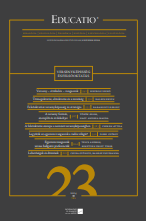Korai iskolaelhagyás – Hullámzó trendek
Early School Leaving – Fluctuating Trends
Author(s): György MártonfiSubject(s): Education, State/Government and Education, EU-Legislation
Published by: Akadémiai Kiadó
Keywords: early school-leaving; educational benchmark 2020; NEET; upper secondary attainment; a European comparison; ESL-reducing policies;
Summary/Abstract: Indicators for ESL (Early School Leaving) and NEET (Not in Employment, Education or Training) can help us make better international comparative analyses than was the case with the “softer” dropping-out category. ESL and NEET have direct relations to the labour market and social integration, and with these indicators one is able to forecast changes in social inequality and the competitiveness of the labour force. One of the main foci of European educational policy is a reduction in the ESL-rate. The benchmark for 2020 is 10%. The medium-term trend of ESL shows a decrease, not only for the whole of the European area but also for each individual country. At the same time, though, only some countries are showing a continual improvement in ESL – fluctuating curves are typical, along with temporary setbacks. Between 2010–2012, Hungary’s performance was the worst regarding ESL-rate development, and we can identify the main reason for this unfavourable change in educational policy before 2010: it neglected the ESL issue. Unfortunately, educational policy has additionally neglected the ESL issue since 2010, too – so it is highly probable that Hungary will also have to face further, maybe significant, increases in the ESL rate in the next few years.
Journal: Educatio
- Issue Year: 23/2014
- Issue No: 1
- Page Range: 36-49
- Page Count: 14
- Language: Hungarian

